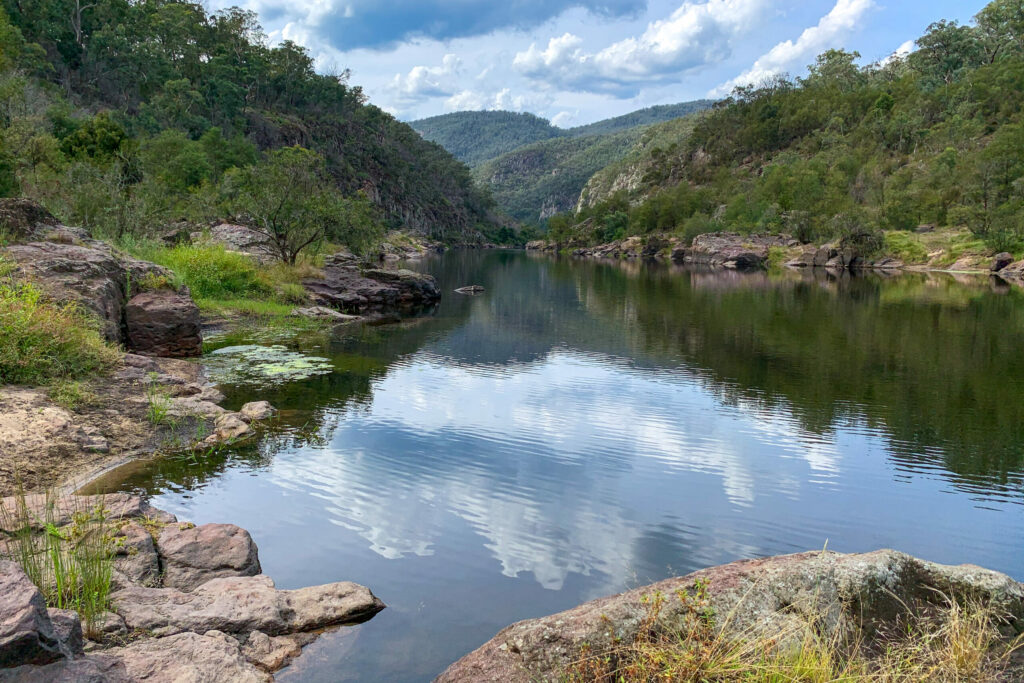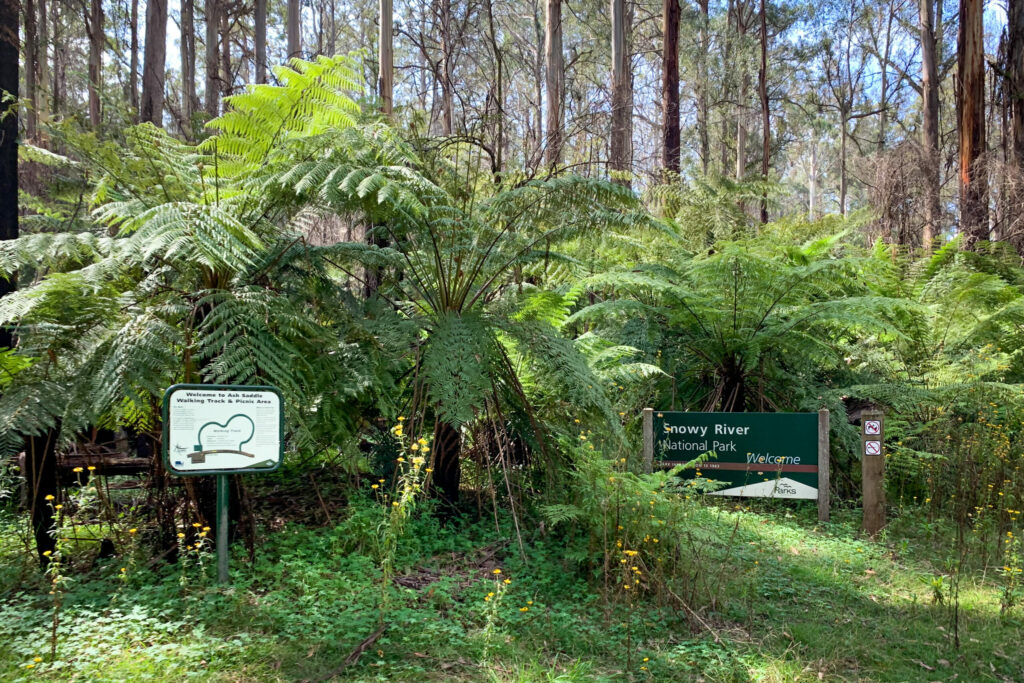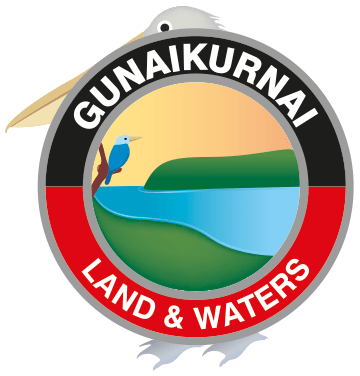New Guinea Caves
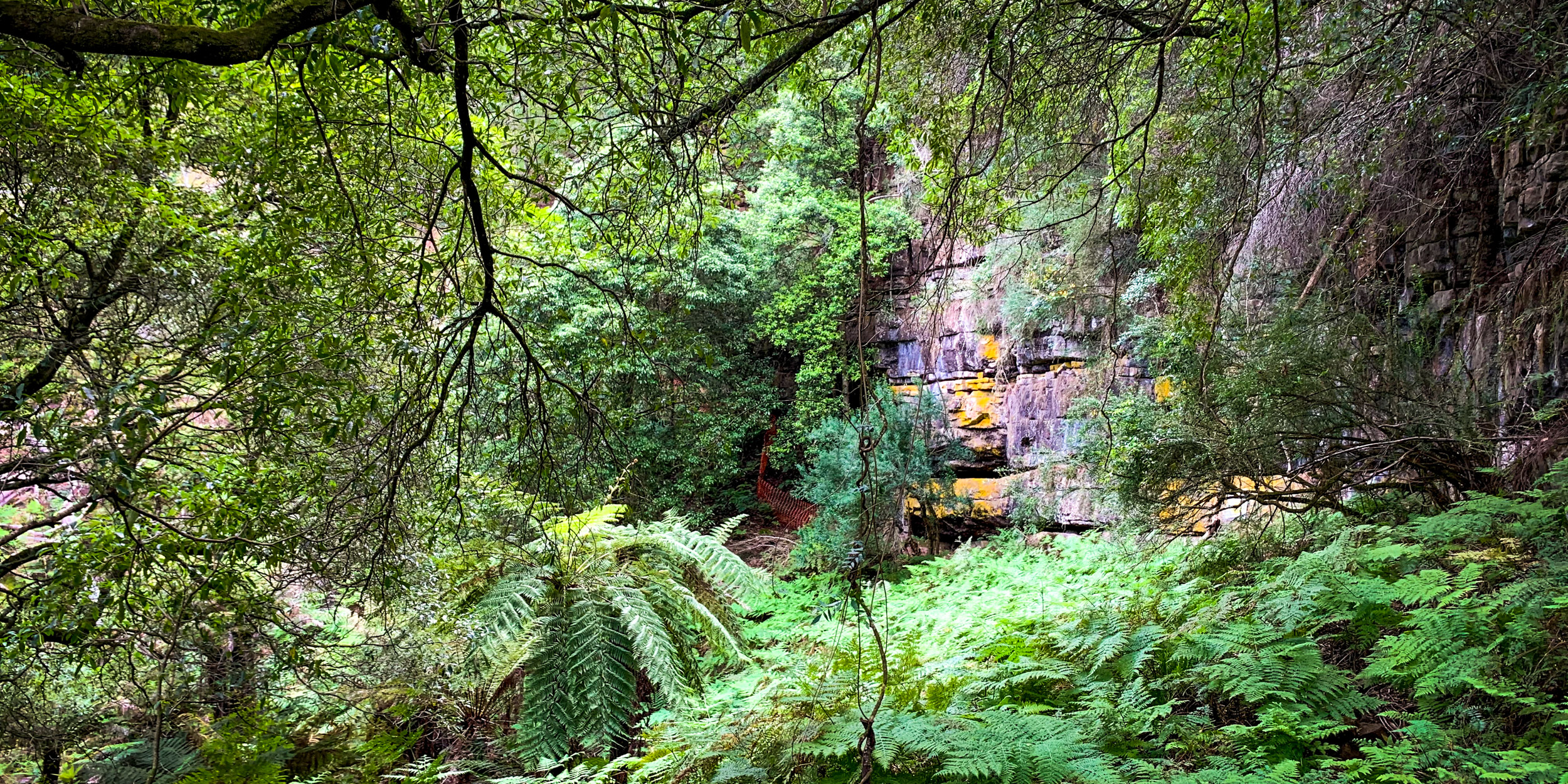
New Guinea Caves is a rare cultural site and one of the oldest inhabited caves in the world. Our old people used to camp in this refuge on the way to and from the high country, when they followed food and temperate weather in their seasonal migrations. There was always a good supply of water from the Snowy River and an abundant source of food and other natural materials.
Because of the good supply and quality of rocks, the area was an important stone tool manufacturing and repair site. People like the idea of visiting this interesting and challenging place, but this is causing significant damage to the site — through erosion of the roads and the theft of cultural artefacts.
The cultural importance of the New Guinea Caves area for the Gunaikurnai is not limited to the physical cave structures and artefacts; it also resides in the significance of the surrounding land as a place of resort and shelter during travels and movements along the Snowy River Valley.
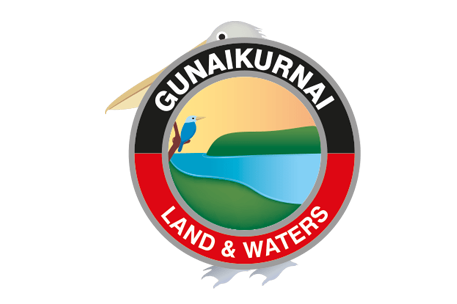
New Guinea Caves is one of the ten jointly managed parks and reserves within Gippsland.
The Joint Management Agreement recognises the fact that the Gunaikurnai people hold Native Title and maintain a strong connection to Country. As custodians of the land, they are the rightful people who speak for their Country.
These parks and reserves are cultural landscapes that continue to be part of Gunaikurnai living culture.

Connecting to Country
Archaeological investigations of Cave II between 1980 and 1985 by several Victorian archaeological institutions identified and recorded a number of stone artefacts and cultural material. These investigations established a date of occupation
extending back almost 21,000 years to the Pleistocene epoch. Significantly, the investigation found bone artefacts including skeletal remains of Tasmanian Tigers, Tasmanian Devils, Quolls and other species.
Large pits dug during the 1980s excavations in New Guinea Cave II created major impacts in the cave and were not re-instated. Some cultural material was removed for archaeological analysis of the assemblage.
Cultural mapping, three dimensional cave modelling and geotechnical assessments of New Guinea Cave II will further clarify the extent of cultural heritage. The cultural mapping project will consider the potential repatriation of previously excavated cultural material.
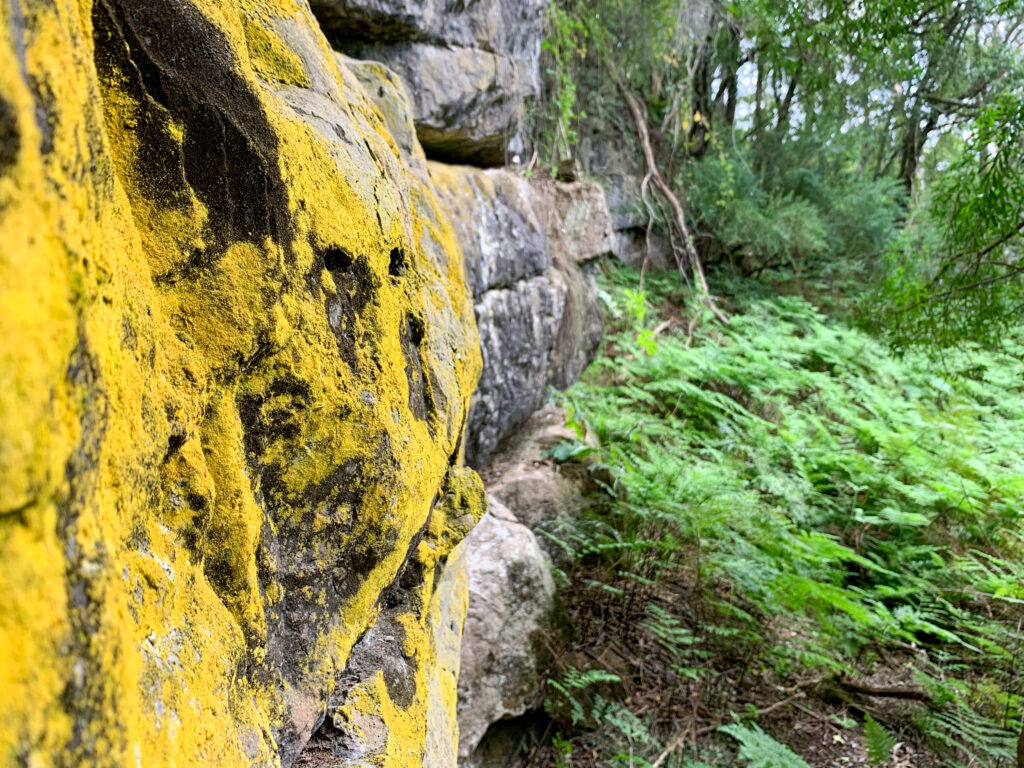
In addition to their cultural values, the caves are nationally significant geological and geomorphological sites (Rosengren et al. 1981). The caves are also an important shelter for the Eastern Horseshoe Bat (Rhinolophus megaphyllus), the Common Bent-‐wing Bat (Miniopterus schreibersii), and potentially other species. New Guinea Cave 2 is regarded as one of the few caves in the area used by pregnant female bats for acclimatisation prior to the birth season (Hamilton Smith 1965). As a bat habitat, the cave and its immediate surrounds are very sensitive to flood and fire impacts.
The area consists of rugged, timbered country with some warm temperate rainforest. Stands of grass trees (Xanthorrhoea spp.) are also present. Table 2 describes significant ecological vegetation classes (EVCs) – the standard categorisation of vegetation communities in Victoria – in the area.
The predominant EVCs are Shrubby Dry Forest (54% of the area), Damp Forest (23%) and Grassy Woodland (8%). There are also small areas of rare Warm Temperate Rainforest and Riparian Shrubland.
The New Guinea Caves area covers 1153 hectares of land in the Snowy River National Park, north-east of Buchan. The area consists of steep, forested ridges on the western side of the Snowy River Valley, with small pockets of woodland and rainforest.
The origin of the ‘New Guinea’ name for the area is unclear. An account of modern cave exploration suggests it may derive from the appearance of the area with its rugged terrain and relict rainforest patches (Frank & Davey 1976). It includes six known caves located on the New Guinea Ridge. Of these, New Guinea Cave II is the most significant. The limestone cave and overhanging rock provided shelter for Gunaikurnai people during migration to and from the high country and was used intermittently by hunters.
The site is highly significant because of its rock art, stone tools and other artefacts. New Guinea Cave II is included on the Victorian Aboriginal Heritage Register and is identified as an area of cultural sensitivity under the provisions of the Aboriginal Heritage Act 2006. The surrounding Snowy River National Park covers more than 114,600 hectares and was initially proclaimed in 1979. The area containing the New Guinea Caves was added in 1987.
The Snowy River and a corridor of adjacent land is protected under the Heritage Rivers Act 1992 (Vic.) in recognition of its high geomorphological, botanical and faunal values, its cultural heritage including the New Guinea Caves, and recreational and scenic values (LCC 1991).
The area is remote but is visited by rafters and canoeists as well as cavers. Several steep four wheel drive tracks, which are seasonally closed, descend the ridges from the Tulloch Ard State Forest to the west.
The New Guinea Caves area is on the Country of the Krauatungalung clan. Since the 1990s the area has been managed under a conservation and recreation zoning, with a Special Protection Zone applied to the cave sites and their immediate surrounds.
Vehicular access tracks have been seasonally closed, and public access to New Guinea Cave II was physically barred. The effectiveness of this management regime to protect the Caves from illegal entry and suspected removal of cultural artefacts needs to be carefully monitored.
The GunaiKurnai Whole of Country Plan sets out the following management priorities for the New Guinea Caves area:
• preventing public access and establishing an effective enforcement regime
• clean up and removal of debris from past floods
• putting strategies in place that minimise damage from future floods
• looking at options for sole management of New Guinea Cave II, including adequate resourcing.
While recognising these priorities, this plan sets out actions that are consistent with and limited to the terms of the 2010 Recognition and Settlement Agreement. Under this joint management plan, the primary objective will be the protection and conservation of the nationally significant cultural values of New Guinea Cave II and the other caves, and their associated natural values.
Increased protection measures will be implemented at New Guinea Cave 2 to stabilise the geological formation, prevent illegal entry, control public safety risks and remove rubbish from previous archaeological work. Powers to protect the cave will be strengthened by seeking the relevant protection declaration under the Aboriginal Heritage Act 2006 (Vic.).
Vehicular access on Betts Creek Track will be restricted year round, and subject to access by permit for purposes consistent with the management objective including GunaiKurnai cultural access, access by recognised groups for research, speleology, outdoor education, rafting entry and exit from the Snowy River, and other purposes.
Information and interpretation for visitors to the area will be improved at Ash Saddle and New Guinea Gap, and vehicular access to the area will be restricted by means of a permit system.
Click here to read the full Joint Management Plan for New Guinea Caves II



